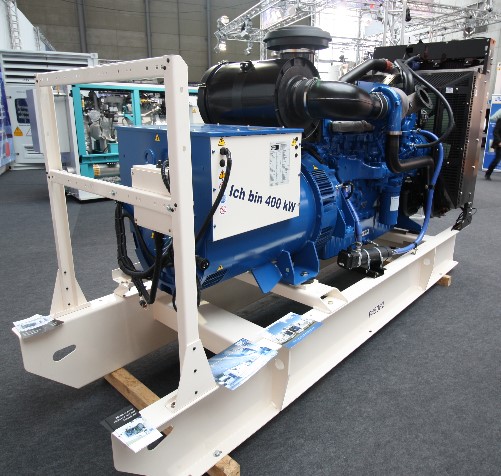Plastics Technology Calculator Industry Extrusion - Calculate Now
In the extrusion process, certain (different) substances are pressed through a die or tool. Accordingly, the "classic" mincer could also be regarded as an extrusion tool.
The respective basic substance passes through one or more screw shafts integrated in a barrel in the course of the machining process. This is pressed through the die at the other end and then cooled to room temperature or cut off directly as granules. This is referred to as the extruded product.
Before this, however, the raw material to be extruded must be processed - usually with the aid of thermal or mechanical properties. In the course of the entire process, one either benefits from the chemical changes that result from the acting thermal energy, or thermal properties. Alternatively, the shaping die ensures a pressure build-up with the discharge of the product to be extruded, the extrudate.
Frequently, however, depending on the type of product, physical changes resulting from the action of mechanical energy are also utilized.
In such cases, we speak of frictional heat, also known as shear heat. The term frictional heat refers to the friction of various particles (plastics) with each other, the friction of the material with the screw barrel and the friction of the material on the screw flights.
For some time now, attempts have been made to achieve heat recovery from the heat generated in the extruder in order to be able to heat parts of halls or offices.
Extrusion products
There are many different types of extrusion products, a large part comes from the food industry, and another part on the field of plastics technology.
Extrusion products in the food industry
In the food industry, for example, peanut flips, butter, pasta, and many sweets are produced by extrusion. Mostly these products are made by additives like corn starch and other binders.
Extrusion products in the plastics industry
In the plastics industry, we most often talk about profiles, pipes, cable sheathing, granulation by masterbatch, and also calendering of films. Profile extrusion is divided into hollow chamber profiles and simple basic profiles. Hollow chamber profiles are much more difficult to extrude than standard basic profiles, such as cable ducts, skirting boards, etc.
Animal feed products by extrusion technology
Extrusion can be used, for example, to produce animal feed, including concentrated feed or pet food (depending on the type also with embedded medicines), detergents (here the classic "mega-pearls" are probably the best-known examples), modified starch (for the food industry, but also for finishing paper) glazes or films.
How does extrusion actually work?
The main performance characteristics are:
-
Excellent melt quality during conveying
-
Low maintenance and servicing costs
-
Long service life of screws and barrels.
Parallel twin screw extruders play an important economic role in the high performance extrusion of e.g. PVC profiles. In order to meet the increasing demands of the market for product quality, even with lean PVC formulations, some extruder suppliers have consistently developed the machine technology further.
-
The conical extruder has been developed for the lower performance ranges, i.e. for extruders that are operated with little energy. The special feature of some manufacturers is the negative conical flight depth for a higher output per screw revolution in the discharge zone. It thus combines the advantages of parallel process technology with the mechanical engineering advantages of the gear of a conical extruder.
-
Single-screw ext ruders have impressive discharge characteristics, making them highly suitable for many applications. Thanks to their adapted screw geometry, almost all thermoplastic materials can be processed.
-
Parallel twin screw extruders create a larger material conveying, different better generated zones, degassing zone, plasticizing zone. etc.
The functional series of plastic extrusion is as follows:
The barrel should have a temperature between 180 degrees and 210 degrees Celsius, e.g. for thermoplastics like PVC, also the screws heat up to the same temperature. There are also screws that are water-cooled to achieve an even heat distribution. The material is fed into the extruder from above through a hopper. Possibly by scales, or spiral conveyors a constant filling is ensured. In case of difficult filling, a tamping device is also set up if necessary, which tamps the material into the extruder. The material is conveyed forward by the screws and moves through the individual temperature zones. Here, the material is homogenized, plasticized and, if necessary, degassed.
The material that continues to be conveyed is now pressed at the front of the screw tip through what is known as a "die" in profile extrusion. In extrusion, a "die" is divided into three zones. One speaks of the inflow part, transition part and the parallel guide. In calendering, the homogeneous compound is also pressed through a plate die, and in pelletizing through a perforated plate, which is available in various designs with different hole diameters and holes.
The extrudate now emerges from the die, and is further treated in different ways. In profile extrusion, it is cooled down to at least 60 degrees by dry and wet calibrations and then separated by separating devices such as saws, punches and guillotines.
In UWG ( underwater pelletizing), the plastic is separated by knives on the die plate and dried and cooled with water and centrifuge. Then the granules fall in lentil form onto a vibrating screen and are transported further.
In calendering, we are talking about roll technology. There, the material is conveyed around rollers and thus dried and rolled up. (Example film rolls)
What can be achieved with this process?
Extrusion is becoming more and more widespread in our lives as we rely more and more on plastics, and as the food industry pays more and more attention to what we consume. It is often said, " The eye eats with us!" It is also important to include extrusion, because you can make a wide variety of products by extrusion, and assign any shape of the extrudate.
So we have the possibility to produce a variety of shapes, variants and creations by extrusion and to enforce this as economical and energy-saving as possible.
However, there is one more important thing that should not be ignored at all!
What does every extruder plant need to be able to produce successfully?
Professionally trained process mechanics are usually involved in the entire production process of a plastic part. In the process, they produce plastics of all kinds in workshops or factory floors with the help of machines or equipment. They process materials such as thermoplastics, thermosets and elastomers.
Process mechanics prepare the raw materials to manufacture the products. They add additives, e.g. plasticizers, fillers, color, stabilizers, etc., in precisely metered quantities. They set up and optimize the entire plant, convert it and prepare test reports or carry out complete trials on the equipment.
Only a well-trained process mechanic can also eliminate most malfunctions and problems, identify them and ensure or guarantee a smooth process in the future.
Topics: business & Industry & Mechanical Engineering & Plastics Technology



